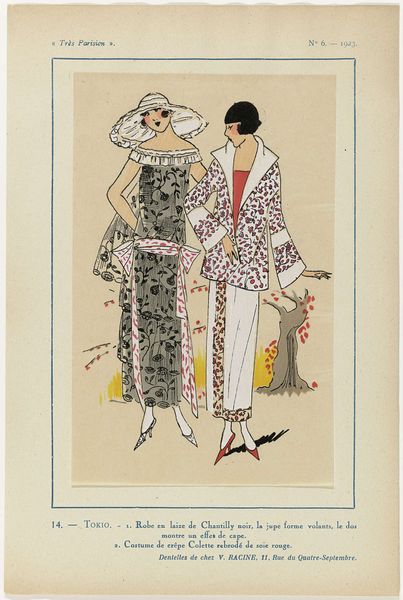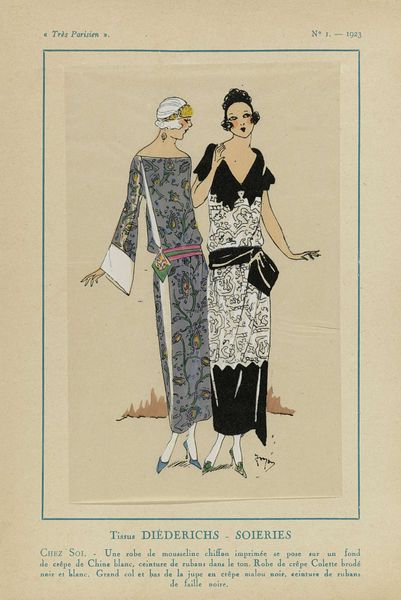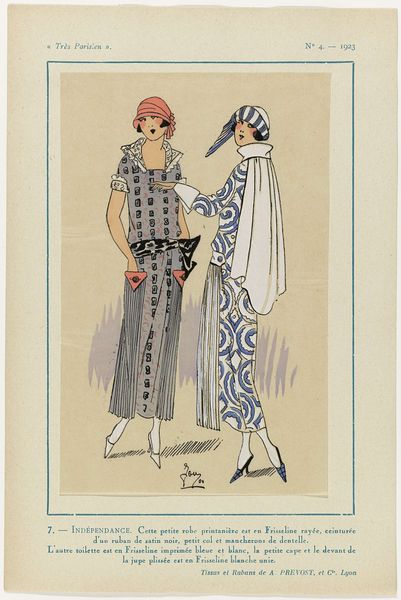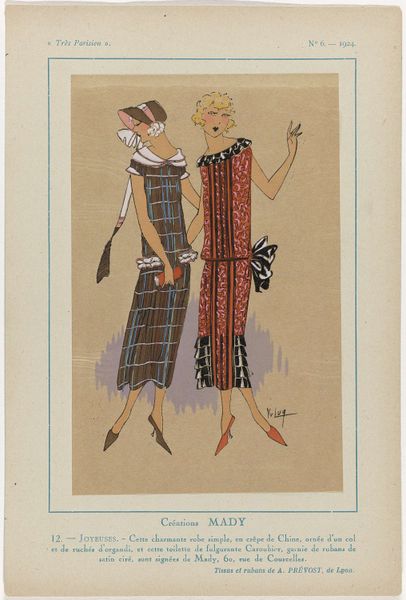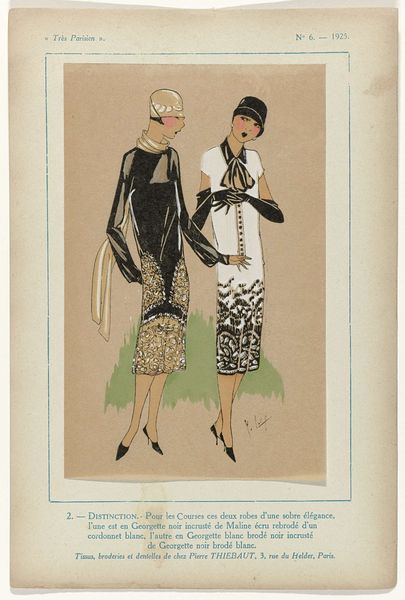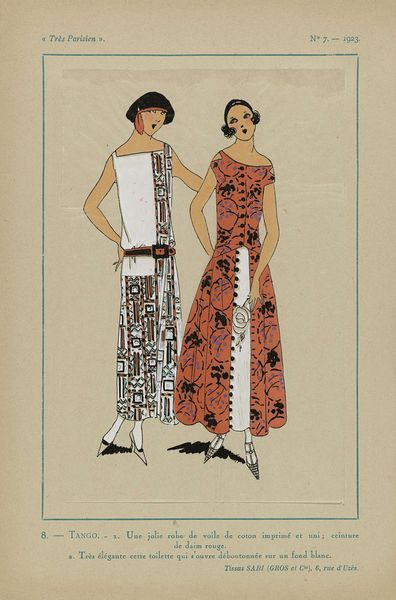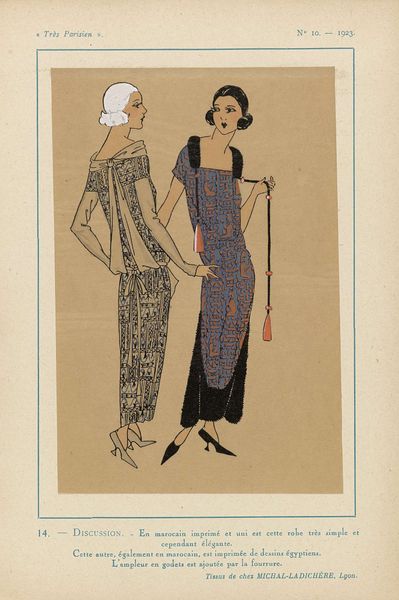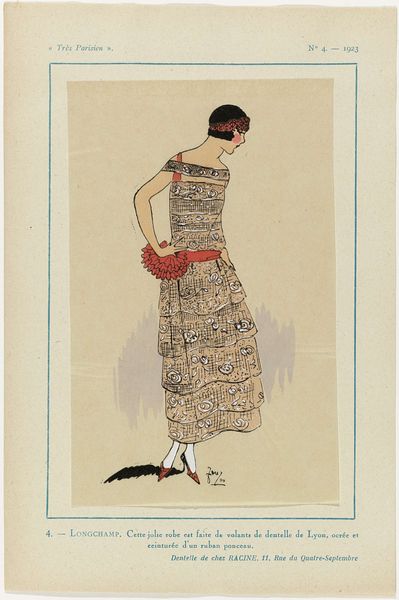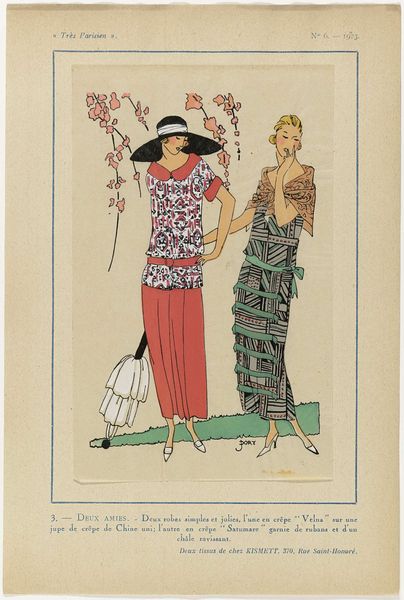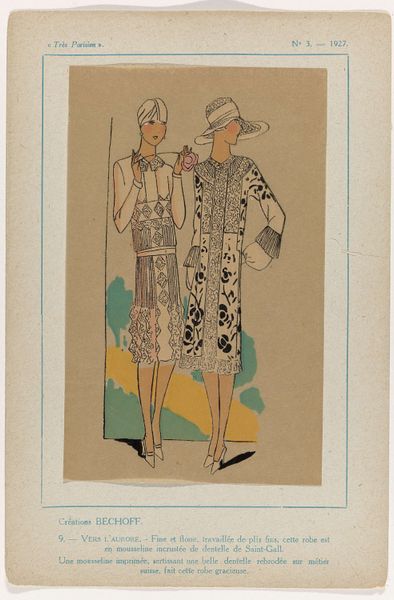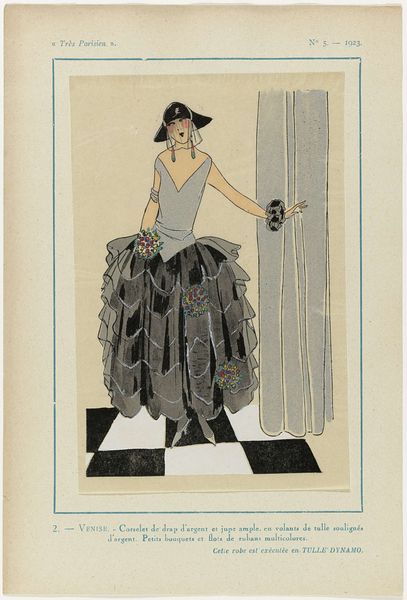
drawing
#
portrait
#
art-deco
#
drawing
#
flat colour
#
watercolour illustration
#
decorative-art
#
dress
Dimensions: height 269 mm, width 180 mm
Copyright: Rijks Museum: Open Domain
Editor: This watercolor illustration, "Tr\u00e8s Parisien. La Mode, Le Chic, L’El\u00e9gance," is giving me all the Art Deco vibes! Done in 1923 by an anonymous artist, it features two boldly dressed women. There is an immediate feeling of style, but I’m curious what else you see in this piece? Curator: Style indeed! And dare I say, a *bit* of cheekiness? Look how the patterns almost vibrate off the page, practically shouting, “We’re modern! We’re here!” It is as if the artist captured a flapper’s defiant spirit. This wasn’t just fashion; it was a statement. Now, tell me, what about those parasols? Think they are offering any *actual* shade? Or are they merely...props in a play? Editor: That's a great question. I hadn't considered their functionality. They almost feel theatrical, adding to this sense of constructed elegance. Maybe the anonymity of the artist adds to that; it’s as if they are presenting an ideal of Parisian chic, rather than reflecting a personal perspective. Curator: Precisely! The artist acts almost as a stage director, shaping the narrative. In this scene, which character draws you in more? Editor: I'm drawn to the woman on the left with her angular patterns, more contrast to her style than to the softer, paisley. Curator: Ah, the flapper of geometry versus the mysterious paisley enchantress. Each holds a piece of the Jazz Age puzzle. I find myself looking again and spotting new elements; what a thought-provoking slice of history!
Comments
rijksmuseum about 2 years ago
⋮
Très Parisien promoted itself as chic and elegant. Between 1920 and 1936 it presented creations by such couturiers as Chéruit, Premet, Philip et Gaston, and Lanvin. The young, svelte models are all ultra-modern, shown talking on the phone, smoking and playing tennis. The illustrations also show that over the course of the 1920s, skirt lengths had risen to just below the knee, before dropping back down to calf length in the 1930s. The small plates were printed on transparent paper using a stencilling technique known as en pochoir and then hand coloured; many of them are unsigned. The signature ‘Joujou’ belonged to Germaine Paule Joumard, who was the director of Très Parisien, as well as one of the magazine’s illustrators.
Join the conversation
Join millions of artists and users on Artera today and experience the ultimate creative platform.
